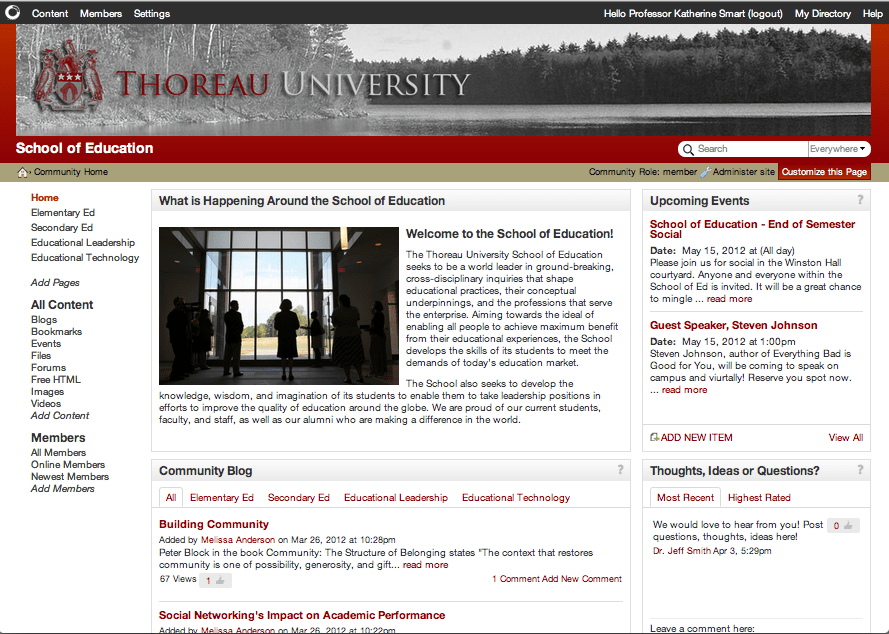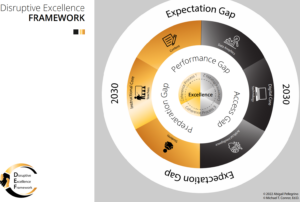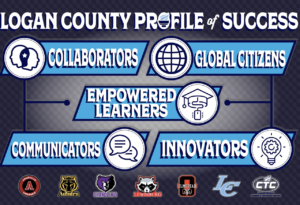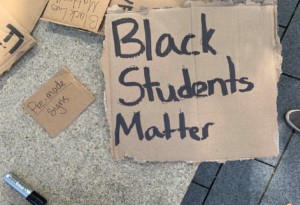Q&A: What’s GoingOn At Your University?

GoingOn, an academic social networking platform, allows educators and administrators to keep students informed about unique opportunities in their major, courses, interests and more. Jon Corshen, CEO of GoingOn, joins us today to discuss the ways that social networking is expanding opportunities for students, bridging gaps in collaboration and integrating increased back-channeled conversation in and out of the classroom. 
Q: Where did you get the idea for GoingOn?
I spun GoingOn out of a company called AlwaysOn, which was/is a highly successful social media property focused on technology entrepreneurship. It had a deep understanding of how the social web was changing publishing and ideas about how to drive conversations across industry experts, technologists, investors and other key members of the community. I had similar ideas about the power of the social web and its ability to surface knowledge from the interactions and conversations of a community. I felt strongly that these technologies could help to change the way that we learn and how we experience academic life.
Q: How have the elements of social media (sharing, liking, etc.) changed the way we interact with learning materials?
Facebook and Twitter have accomplished in the last 5 years what IBM, Microsoft or Datatel could not do in the prior 20 years: crack the code on collaboration. While there are many reasons for the success of Facebook, Twitter and other modern social media technologies, the core of their power lies in the elegance of the modalities that they support. It starts with “push” based activity streams that help route timely, relevant and actionable information to users. From there, it includes streamlined models to facilitate conversations and engagement, including follow, share, comment and like. Lastly, these modalities support a powerful recommendation model/engine that utilizes the social graph to help ensure that users can easily access the information and resources they are most interested in. Unlike email which quickly fills with SPAM or mind numbing email strings, Facebook spaces manage to remain relatively clean and usable. Within the education sector these modalities can have several impacts:
- Most importantly these modalities support more constructivist learning models by allowing students to interact and converse around specific learning objects or goals
- They enable a blended and online learning model that makes both teaching and learning much more effective
- They allow students and faculty to curate connections with the experts, cohorts and mentors that can help them to learn
- They make it infinitely easier to discover and share assets across geographical, cultural and language barriers
At GoingOn we believe a majority of learning happens outside the confines of traditional course constructs and that knowledge is formed organically though deep engagement and interaction. Accordingly, the focus of our Academic Social Network is on facilitating a broader “academic life experience” for students and faculty. In practical terms, we seek to do this by allowing colleges and universities to create privately branded networks where students and faculty can more effectively share information, curate connections and collaborate across all aspects of the learning process – whether that involves interacting with the office of student affairs, enabling program level communities of practice, facilitating course-level conversations or providing an environment for a faculty to engage with their master’s students.
Q: How is GoingOn different than Yammer, Facebook and other social networks?
At the highest level, GoingOn differs by focusing solely on the needs of higher education institutions. This can manifest in something as simple as synchronizing upgrade processes around the academic calendar, providing integration adapters that use popular academic standards (such as LTI, CAS & Shibboleth) and supporting education-focused application functionality. Furthermore, GoingOn has evolved to be less about social networking and more about providing an intelligent, socially powered “communication bus” that can help create a more connected campus. It is not just about finding people or even creating collaboration spaces. It is about helping students, faculty and administration to more easily discover and utilize the resources they need to be successful, including each other. With regards to Facebook, GoingOn is a private, academic network that allows students and faculty to separate their academic identities from their personal social network. In addition, all content access and privacy policies are owned by the institution, ensuring that we meet Ferpa level privacy requirements. We are also focused on allowing schools to fully own their brand, affinity and experience. While there is clearly a role for Facebook for Schools in supporting some aspects of ad-hoc interactions, it does not provide an enterprise – class communication and collaboration platform suited for schools and does not provide the level of centralized identity and control that is necessary. With regards to Yammer, we support many of the same stream-based messaging and collaboration modalities. GoingOn goes further in supporting more complex course and community spaces, as well as more complete content management features that are important in an academic setting. There are times where rich persistent (micro-portal like) spaces are important in persisting content and providing a more guided user experience. What is unique about GoingOn is that we provide an integrated platform for creating communities, courses, conversations, channels and circles – allowing us to support the total academic ecosystem. As stated above, we are also education focused and significantly less expensive at the institutional level.
Q: How are schools, students, and educators using GoingOn?
GoingOn’s Academic Social Network is being used in the following ways:
- To replace failed informational portals – portals were designed to provide 3 basic functions 1) provide a central access point to disparate back end systems (single sign on), 2) to deliver composite applications (i.e dashboard for enrolling in courses, and seeing financial aid status and 3) to provide a campus “intranet” for sharing information and managing content. While still very important for 1 & 2, they have failed dismally (and are all but dead) for #3. Users are no longer willing to go to central sites and search complex menus and pages to find a piece of information. They want the right information pushed to them at the right time that is relevant and actionable.
- Faculty Networks that streamline faculty-to-administration communications, foster connections and conversation across distributed faculty, support professional development and policy efforts and to build a network for sharing ideas, building curriculum and collaborating on grant opportunities.
- Student Affairs & First year Experience Networks – to help Administration more effectively deliver information and resources to students and to create a “virtual commons” where students can tap into everything that the school has to offer including extra- and co-curricular activities.
- Continuing and Executive Education – in addition to wanting to support a more social learning environment, these programs also put a large emphasis on foresting relationships across cohorts, experts and mentors. In addition, they typically employ a blended or distance learning model and are hungry to create a virtual campus environment. Lastly, they want to stay connected with students throughout their lives by creating topical communities, channels and conversations, as well as cohort and professional circles within their network.
- Create Dynamic Groups & Conversation That Connect to a Centralized Directory and Virtual Commons – so much of what we learn both academically, personally (and perhaps spiritually) happens outside of the classroom in the corridors and halls of a university. As people become more mobile, campuses more distributed and courses more online, it is essential to bring the entirety of the campus experience online and to capture the knowledge and passions that are in the campus ether. Imagine the power of being able to search a network that knows about ideas, events and discussions that have been going on for years.
Q: Do you think that students today are more or less social than before? How has the definition of social evolved?
The answer is both. When I was young being social was defined solely as your ability to interact directly with people in a live situation. People were measured across a scale of introvert and extrovert. Today, a large percentage, and in some cases even a majority, of a student’s social interaction can happen online. On the negative side, some young adults are losing some personal skills, but in many cases, the network allows them to engage in a more semi-anonymous way, which makes it easier for them to participate in conversation, share opinions and learn. Interestingly, in our focus groups at Emory, students made a STRONG distinction between what they wanted for their social interaction versus their academic communication. They rejected our UI designs that looked too much like Facebook and instead wanted a very lean, purpose built UI that supported very quick and efficient interactions. They said “if we want to socialize we will go to Facebook, but when we want to communicate and engage in campus life and academic pursuit we want something different.”
Q: In what ways has GoingOn bridged social gaps in learning that we weren’t able to achieve before?
By creating a virtual collaboration and communication environment that gets the right information to the right person at the right time, GoingOn’s academic social network provides learning institutions with a key communication tool to expand their reach beyond the confines of a physical campus. New social modalities support communities of learners around a specific class, event, or organization to promote greater collaboration and reduce institutional spam. With the academic social network, students can be connected to campus from anywhere at anytime, bridging boundaries of time and distance. The social bridges, provided by the academic social network, strengthen student and faculty bonds to the learning institution and increase retention. As stated above it also supports semi-autonomous interactions and conversation modalities, which can help faculty and cohorts engage more openly – which always provides for a more successful learning experience.
Q: How does GoingOn envision social learning becoming an integral part of the way we gather knowledge and information in the future?
Knowledge is built organically through active conversations and deep interactions in which ideas and information are exchanged. When these conversations and interactions are done online they start to create an intelligent network where content can be tagged, searched and shared more effectively. In a sense, knowledge is spawned from the network. Wikipedia is a basic example of collaborative knowledge construction and sharing. As concepts around big data and recommendations continue to evolve the network becomes “smarter”. It is able to understand users’ interests and expertise. Accordingly, it can automatically recommend content and people that can be most helpful in achieving academic goals. There are other significant impacts around the breaking down of geographical and linguistic boundaries.





Tamara Argueta
I am a graduate student in Dr. Sester’s ECI 509 Summer 1 class. After reading your blog I visited the Going On website to gain a better understanding of Going On’s social academic network . Some additional information that I learned from your site was that Going On not only offers students and teachers a place to communicate and collaborate but it also provides live streams, a place for digital portfolios, and contains a news dashboard. How many Universities are currently using Going On?